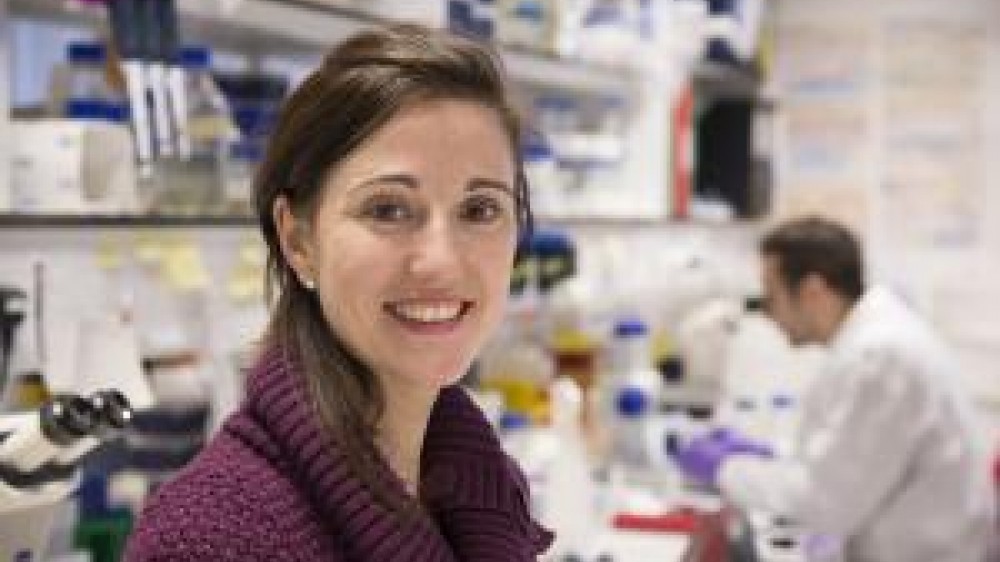Previous 3Rs prize winner publishes more ground-breaking research

Our annual 3Rs prize highlights an outstanding original contribution to scientific and technological advances in the 3Rs.
In 2013 it was won by Dr Meritxell Huch from the Gurdon Institute at the University of Cambridge for her work on liver organoids.
Dr Huch and her team developed a new cell culture system which allowed them to grow adult mouse stem cells into fully functioning three-dimensional liver tissue for the first time (termed organoids). The technique, published in Nature, stood out to the prize panel for its impact on the 3Rs, as well the role this new system would have in furthering understanding of liver disease.
Sponsored by GlaxoSmithKline, the prize consists of a grant and a personal award. Dr Huch's laboratory used the 2013 prize grant, along with further funding from Wellcome and Cancer Research UK Cambridge Centre to develop the system to model human primary liver cancers. The work is described in a paper, published today in Nature Medicine.
The team showed that their innovative cell culture system was able to grow mini-tumours, termed tumouroids, from patients' own tumour cells. Traditional cell cultures had proved difficult to maintain and did not reflect the 3D structure or complexity of human tumours. The tumouroids, however, were shown to preserve tissue structure as well as the gene expression patterns of the original human tumours from which they were derived, making them much more biologically accurate.
29 different drugs, including those currently used in the treatment of liver cancers and drugs in development, were tested on the mini-tumours to test their efficacy. One compound was found to inhibit the activation of a protein called ERK in the tumouroids, a crucial step in the development of liver cancer.
The researchers then tested this compound in vivo, transplanting tumouroids into mice and treating them with the drug. A marked reduction in tumour growth was seen in mice treated with the drug, identifying a potential novel treatment for some types of primary liver cancer.
Showing that the system can be used to culture human cells as well as animal cells opens up the potential applications of the system. This breakthrough could also reduce the number of animals needed in early exploratory work, as the tumoroids can be used to look at key questions about liver cancer, which would have previously been conducted in mice.
Dr Huch will build on this work, through an NC3Rs project grant awarded earlier this year. The award of over £200k will allow the team to further validate the model as an alternative to traditional PDX mouse models. They will also investigate whether the primary liver cancer cultures can remain viable long-term, and be easily manipulated so that they are able to test large numbers of drugs simultaneously, which would allow high throughput testing of future personalised medicines. A large part of the work will also focus on encouraging uptake within the wider scientific community.
Commenting on the work Dr Huch said: “We had previously created organoids from healthy liver tissue, but the creation of liver tumouroids is a big step forward for cancer research. They will allow us to understand much more about the biology of liver cancer and, with further work, could be used to test drugs for individual patients to create personalised treatment plans.”
Dr Andrew Chisholm, Head of Cellular and Developmental Sciences at Wellcome said: “This work shows the power of organoid cultures to model human cancers. It is impressive to see just how well the organoids are able to mimic the biology of different liver tumour types, giving researchers a new way of investigating this disease. These models are vital for the next generation of cancer research, and should allow scientists to minimise the numbers of animals used in research.”
Dr Vicky Robinson, Chief Executive of the NC3Rs, said: “We are pleased to see that the funds from our annual 3Rs prize, sponsored by GlaxoSmithKline, have furthered Dr Huch's research. Each year the prize recognises exceptional science which furthers the 3Rs, and the work being conducted by Meri and her team is continuing to make progress in this area. This new breakthrough involving liver cancer organoids has the potential to reduce the number of animals required in the early stages of liver cancer research, and provide more biologically accurate models of human tumours.”
The NC3Rs prize
Our 3Rs prize is currently open for applications with a deadline of 4pm (GMT) on Monday 4 December 2017. If you know of a paper, published in the last three years, which highlights an outstanding original contribution to scientific and technological advances in the 3Rs, consider nominating it for the 2017 award.
